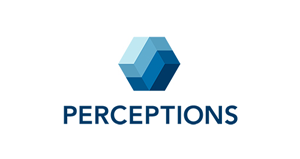 https://www.synyo.com/wp-content/uploads/SYNYO-NEWS-featured-image-NEW01007705EN.png
400
459
leo
https://www.synyo.com/wp-content/uploads/2017/09/synyo-logo.png
leo2025-01-01 10:47:112025-02-10 10:48:51BOND: Outcomes in Advancing Education, Tolerance and Heritage Preservation to combat Antisemitism
https://www.synyo.com/wp-content/uploads/SYNYO-NEWS-featured-image-NEW01007705EN.png
400
459
leo
https://www.synyo.com/wp-content/uploads/2017/09/synyo-logo.png
leo2025-01-01 10:47:112025-02-10 10:48:51BOND: Outcomes in Advancing Education, Tolerance and Heritage Preservation to combat AntisemitismPERCEPTIONS

PERCEPTIONS: Recommendation strategies, tools and guidelines for policymakers
PERCEPTIONS presents recommendations, tools and guides developed in the project. These outputs aim to meet the informational needs of stakeholders in the migration field, including policymakers, practitioners, media, donors, migrants and NGOS. They also aim to positively influence policy making through the use of innovative hand-on materials and best practices.
Background
As observed by many scholars in the ecology of migration, many innovative interventions capable of making potential impact in the ‘real world’ are grounded in material reality, thus promoting certain methods, forms, and durations as ‘good’ practices while at the same time (in)directly contributing to other methods being considered as less effective or unproductive. The PERCEPTIONS project revealed that not only are such processes inevitably political, but they are also a rigorous process and intellectually fascinating engagement and are often where creativity meets geography, as well as where perceptions create narratives or vice versa1 beyond language and traditional geopolitical and boundaries.
Furthermore, challenges in migration management link with narratives and perceptions of Europe and require researchers to see holistically and embrace the importance of (in)tangible imaginaries, new technologies and emotions embedded in our migration ecology to co-create innovative, sustainable, transferable, human rights based, and impactful tools, measures and guidelines. Accordingly, the project worked on a collection of user-friendly strategies, tools and guidelines, materials and servicesto help PERCEPTIONS project stakeholders.
The guidelines
The PERCEPTIONS project is dedicated to supplying stakeholders in the migration ecology including policymakers, practitioners, migrant organisations, and NGOs, with evidence-based policy recommendations, cutting-edge tools, and expert advice. The aim is to satisfy the information needs of these stakeholders, promote informed decision-making through the delivery of timely and accurate data, and engage the community through the utilization of innovative materials and best practices.
Accordingly, the policy recommendations, tools and strategic guides created aim to fulfil three main
goals:
- a) providing stakeholders with the necessary information;
- b) positively influencing policy making through up-to-date data and recommendations; and
- c) engaging the community with impactful materials and best practices.
On a running bases, briefs are published on the PERCEPTIONS platform and uploaded to Zenodo. In addition, they were published on Emerald. Likewise, strategies for creating awareness and calling attention to our policy briefs include, collecting recommendations relevant for LEAs, organisation of and participation in events and workshops, and bilateral meetings with policymakers at different levels. Furthermore, the user-friendly 3D-Crystal Search Engine provides the logic that organises all the resources of PERCEPTIONS on the publicly available web platform. The Crystal is built following a three-layer structure based on the potential needs of the end-users, aiming at stakeholders who want to increase their knowledge (intervention level 1, e.g., providing articles, brochures, deliverables, publications, etc.), who are looking for materials (intervention level 2, e.g., providing best practices, campaigning tools, PERCEPTIONS handbook); and who are looking for policy recommendations and policy-relevant insights (intervention level 3).
Links
Keywords
Perceptions, narratives, first-line practitioners, migration, platform




